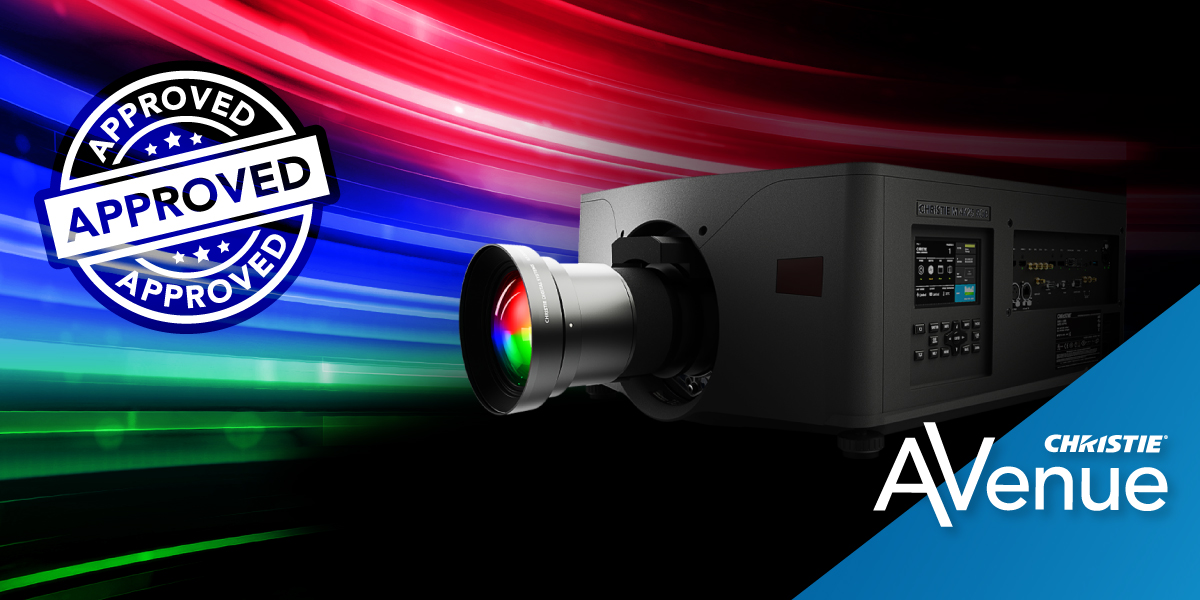Let's talk laser safety

Just like any other high-brightness projectors, laser projectors are powerful devices that deserve respect. The industry understands that they function in a way that minimizes risk – but it’s important to be transparent and encourage everyone to follow current safety procedures. From projectionists and technicians to movie audiences and eventgoers, everyone ought to be able to safely enjoy the high-brightness, great contrast, vastly expanded color palette, long life, and low-maintenance that RGB pure laser offers.
As an AV industry pioneer and innovator leading the way in laser illumination technology, Christie feels that responsibility keenly. You can’t engineer and manufacture award-winning laser projectors unless you do. Nor can you successfully offer the widest range of RGB pure laser projectors in the industry.
So, are laser projectors dangerous?
No more so than any equivalent lamp-based projector. While the illumination source may be pure laser, that source is combined into diffuse white light long before it reaches the projector lens. No unguarded laser beams dance above audiences’ heads as they do at laser light shows.
Indeed, it’s possible to argue that laser projectors of all kinds – laser phosphor and RGB pure laser – may actually be safer than their lamp-based equivalents. Handling conventional and highly pressurized glass lamps demands care and protective clothing – and they require regular replacement by trained personnel.
Not all light is created equal
But it’s the difference between diffuse and coherent light that matters. Take a ten-dollar laser pointer bought online — a cheap device that projects a very narrow, coherent laser beam. When the light spot it generates reaches the retina, it remains small, and therefore the energy density is high. In contrast, although the light a laser projector produces is many orders of magnitude greater, the light is diffuse, the retina spot produced much larger, and the energy density correspondingly lower.
Laser projection, then, is not only as safe as its lamp-based equivalent; it probably poses less of a real-world hazard than a ten-dollar laser pointer.
Reflected in the regulations
All this is reflected in recent regulatory changes. The latest International Electrotechnical Commission (IEC) standards now classify lamp and laser projectors under the same Risk Group classification. And responsible laser projector manufacturers like Christie contain non-projection lens hazards to a safe Laser Class 1 to increase safety during both operation and maintenance – such as adhering to the IEC’s new ‘soft start up’ requirements that prevent laser projectors from going to full-brightness as soon as they are turned on.
So laser projectors are safe. What’s to discuss?
Because it’s not enough for projector manufacturers like Christie to meet stringent safety requirements and exceed the regulations that keep customers and audiences safe. We need to spread the safety message as far and as wide as possible so customers, integrators, and regulatory bodies can make informed decisions based on hard facts.
It’s one of the reasons Christie is not only a member but a founding member of the Laser Illuminated Projector Association (LIPA), a group that advances the technology, facilitates regulatory change, and harmonizes standards globally. One way LIPA helps rationalize laser regulations is by educating the public, government regulators, and stakeholders about the benefits and risks of laser-illuminated projectors.
Thanks in large part to LIPA’s efforts, there are no longer complex regulatory hurdles to navigate for RGB pure laser and laser phosphor projector installations.
And the more we understand how inherently safe laser-illuminated projection technology can be, the more we can simply enjoy the amazing visual experiences it creates.






